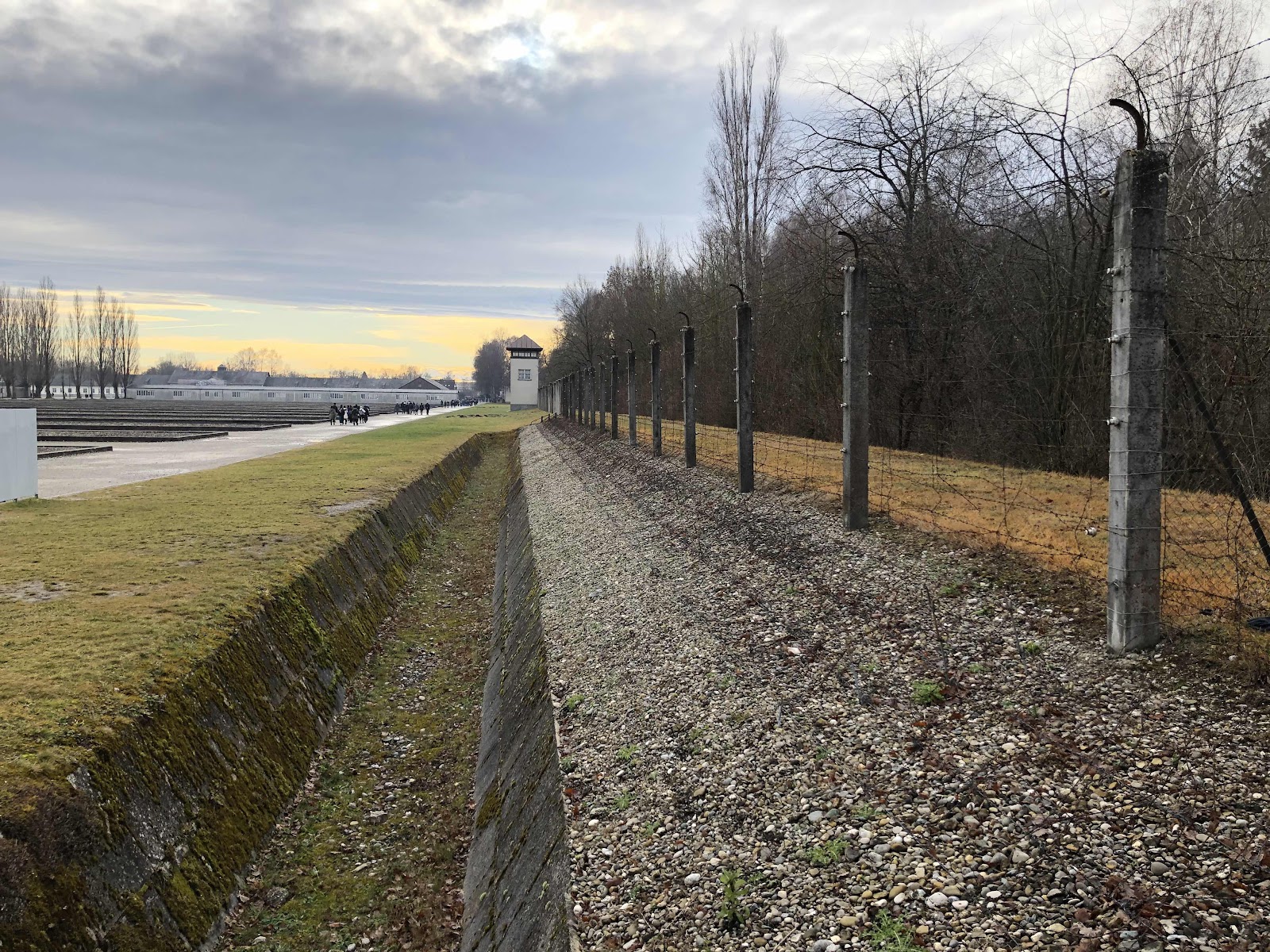Munich Day 2 - Dachau
We had been looking forward to this visit for a while now. We thought that it was important to help us understand the history of the Nazi rule some more and to put a more human face on the stories we have all heard.



Dachau was the first of the Nazi concentration camps (and there were 700 camps in Germany alone at the end of the war). It opened in 1933 with the main aim of detaining political opponents to the National Socialists. As time went on, their scope extended to anyone who did not fit the norm that they wanted to achieve, ie of Aryan superiority. This extended to the Jews, who got the blame for just about anything, communists, homosexuals, handicapped people, drunks, unemployed people, returning emigrants, Jehovahs Witnesses etc.
The treatment of these people was, at first, to humiliate them. Some were even released, under strict conditions, when they had decided to conform. The prisoners had to work, had endless roll calls, rules and punishments, and lack of food. The saying on the gate here, and in other camps, of Arbeit Macht Frei, or work will free you, later took on a sinister overtone, in that the aim was to work them to death.
When the war started, our guide told us that the emphasis went from humiliate to exterminate. Some 30,000 people lost their lives here. And this was not one of the death camps, like Auschwitz. There is a gas chamber at Dachau but it was not used except for some testing of the poison gas quantities and strengths.
The original crematorium was not able to handle the volume of bodies, so they built another one, which we walked through. This was very unsettling - we commented that the job that some prisoners had to feed the crematoriums must have been soul-destroying. When the camp was liberated, the Americans found 3000 corpses that had not been cremated.
We heard lots of detail about medical experiments, inhuman punishments and the incredible over-crowding. The camp built to hold 6000 prisoners had 32000 there when the Americans came.
Most of the camp buildings have been destroyed. There is a main maintenance building that now houses the museum, and the crematoriums. There are also religious monuments that have been erected and a reconstructed barracks building that shows just how miserable their existence must have been.
All in all, we were glad to have seen this. The inscription on a statue depicting a defiant prisoner translates to something like “honour the dead as a warning to the living”, in other words, never let this happen again. In an interesting side note, Carole commented to the guide how could anyone deny the existence of the holocaust when there is so much evidence that proves it. He said that it would not be from a German; it is illegal in this country now to deny it. Lots of school groups there because they learn the history of those years, and the atmosphere at the camp seemed to keep them quiet and respectful.
On a brighter note, we join the Albatross tour group this evening and set off into Austria in the morning.
Comments
Post a Comment